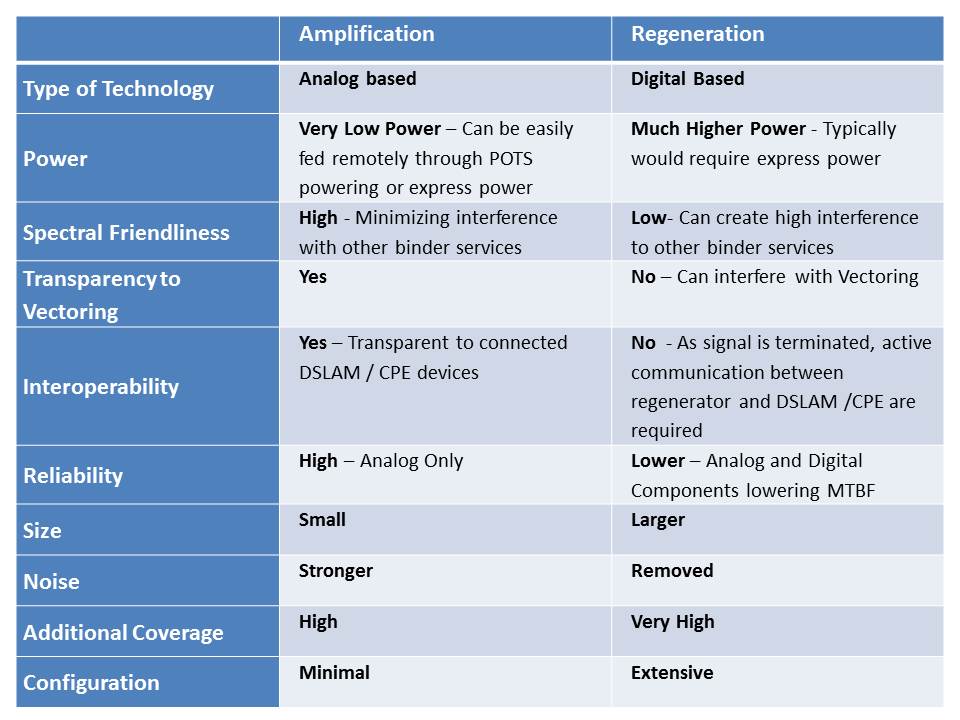What is Analog Amplification and Regeneration?
Analog amplification and regeneration are the two most common methods of dealing with increasing the signal power of DSL to enable greater reach (coverage) and bandwidth. An amplifier magnifies the signal without terminating it, while a regenerator terminates the received signal, reshapes and retimes and regenerates. Amplification is typically analog based, while regeneration involves both analog as well as more complex digital processes.
Why is it Important?
DSL signals are naturally attenuated when traveling over a copper pair, limiting the rate as well as the distance that it can be carried. Carriers are constantly looking for cost effective ways to further extend their DSL coverage, expand their capability to deliver higher, more advanced broadband and triple play services, while enhancing QoE and reliability. Building more cabinets, pushing many smaller DSLAMs closer to the customers can be very effective in increasing the bandwidth and coverage but incurs high cost involving civil work, stretching backhaul capabilities, making power available.
Key Differences of Amplification and Regeneration
While both techniques can be employed in a DSL network, here are the key things to consider
about each:

Actelis uses unique intelligent amplification in its Broadband Amplifiers, offering precise digital control of an analog network to optimize gain for the topology of the network, optimizing gain for better control of crosstalk with the most cost effective solution possible. Digital regeneration is used in our XR239 Repeaters, where the cost of full regeneration is a good investment for having the ability to use up to 8 repeaters and 9 cable segments.
